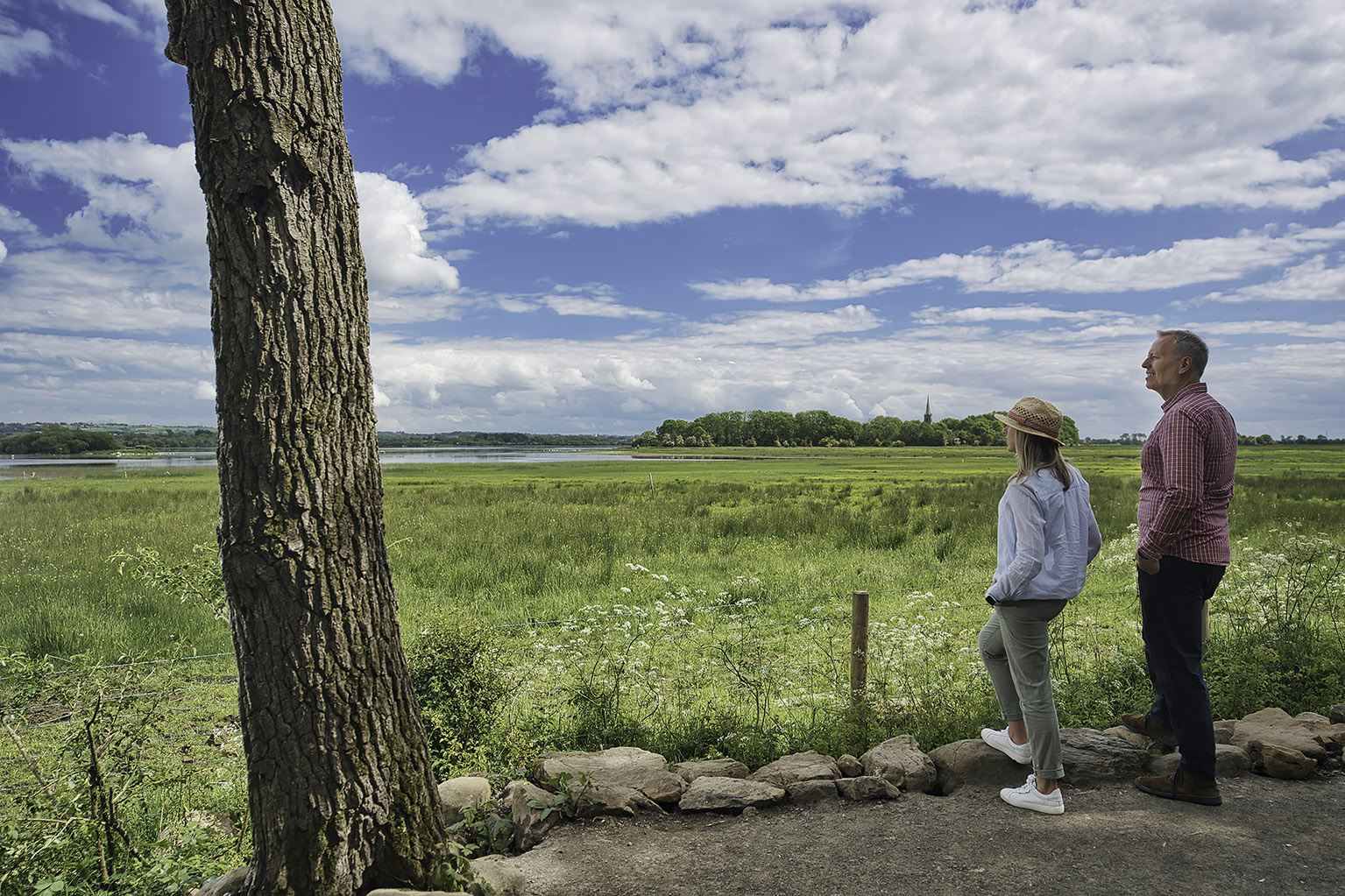Open Ground
Explore locations linking the landscape and the literature of Seamus Heaney. Venture out to Open Ground, a series of five locations which held great significance for Seamus Heaney.
Discover how each of these places, so much a part of Seamus Heaney’s formative years, influenced the rich legacy of his literature. In each location, interpretation panels tell you about the places you’re visiting.
While the experience can be completed as a self-guided activity, we also offer Open Ground Guided Tours. Visiting each site with our experienced guide adds an extra rich layer of interaction with the places and landscape and you’ll hear from them directly how each of the five locations held great significance for Seamus Heaney.
Private tours are also available upon request. Contact us here for more information.
Poems rooted in these places
Discover places that shaped Seamus Heaney’s life and literature — Toomebridge, Magherafelt, Moyola River, Lough Beg and Bellaghy Bawn — and discover the smells, sights and sounds that make his poetry so uniquely of this place.
Heaney’s roots were in the Bellaghy area and many of his poems are equally rooted in these places. Throughout his career, he regularly drew upon the loughs, rivers and bogs he visited in his formative years.
Many of these places are unchanged and unspoilt since the time Heaney wrote about them, allowing you to see them for yourself through the poet’s eyes. Read Heaney’s work in the context in which it was inspired and see how the places of Open Ground are reflected in his writing.
The Strand at Lough Beg
Seamus Heaney’s poem ‘The Strand at Lough Beg’ takes its name from a place where his family’s cattle once grazed. Heaney had fond memories of visiting the Strand with his father at the end of the day to check on the herd.
Lough Beg is a wetland Nature Reserve, where you can watch wildfowl, woodland birds and the seasons come and go – just as Seamus Heaney used to do in one of his favourite places.
‘The lowland clays and waters of Lough Beg,
Church Island’s spire, its soft treeline of yew.’
– The Strand at Lough Beg, Field Work
Moyola River at Castledawson
The fields at Mossbawn, the family farm where Seamus Heaney was born and spent his early years, ran down to the Moyola River. With the Moyola just half-a-mile from his front door, the young Heaney would walk along the river to the stone arches of the railway bridge at Castledawson.
The poem ‘A New Song’ recounts time spent by the water. Follow the riverbank for yourself and discover the birds, rocks and trees that inspired Heaney.
‘And stepping stones like black molars
Sunk in the fjord, the shifty glaze
Of the whirlpool, the Moyola
Pleasuring beneath alder trees.’
– A New Song, Wintering Out
The Turfman at Bellaghy Bawn
One of Seamus Heaney’s best-known works, ‘Digging’, compares digging turf from a bog with the poet’s own labours when writing. It recalls a visit to Heaney’s grandfather while he was cutting turf on Toner’s bog.
The poem and the practice of cutting turf are honoured by David Annand’s sculpture The Turfman. Sculpted in turf then cast in bronze, the statue stands at Bellaghy Bawn as a monument to the power and skill of both the turf-cutter and Heaney’s words.
‘Nicking and slicing neatly, heaving sod
Over his shoulder, going down and down
For the good turf. Digging.’
– Digging, Death of a Naturalist,/span>
The Eelworks
Seamus Heaney became fascinated with eels and eel fishermen when he began visiting his wife Marie’s family at Ardboe, on the shores of Lough Neagh. He took inspiration from the Eelworks at Toomebridge – the most productive wild eel fishery in Europe – for his poem ‘A Lough Neagh Sequence’.
Visit the gates where the eels are harvested, and Malcolm Robertson’s sculpture capturing the migration between Mid Ulster and the western Atlantic, which had enthralled Heaney.
‘At Toomebridge where it sluices towards the sea
They’ve set new gates and tanks against the flow.’
– A Lough Neagh Sequence, Door into the Dark
Magherafelt
The nearest town to Seamus Heaney’s childhood home, Magherafelt and its amenities are regularly evoked in his poems. Doctor Kerlin, who visits the Heaney home in ‘Out of the Bag’, had his practice on Broad Street.
Magherafelt’s cinema is recalled in ‘Two Lorries’, as is the bus station where Heaney met his mother when returning from school at St Columb’s College in Derry. Heaney juxtaposes this meeting with the 1993 bombing of the bus station, which was also a stop on the poet’s bus journey in ‘Route 110’.
‘A revenant on the bench where I would meet her.
In that cold-floored waiting-room in Magherafelt’
– Two Lorries, The Spirit Level
Explore Open Ground
Download the Open Ground app from the App Store or Google Play to listen to Seamus Heaney read his poems in the places that inspired them and explore Open Ground through augmented reality experiences.
Make an Enquiry
If you have any questions about the exhibition, an upcoming event or anything else happening at HomePlace, you can write to us or give us a call. We’re here to help.





